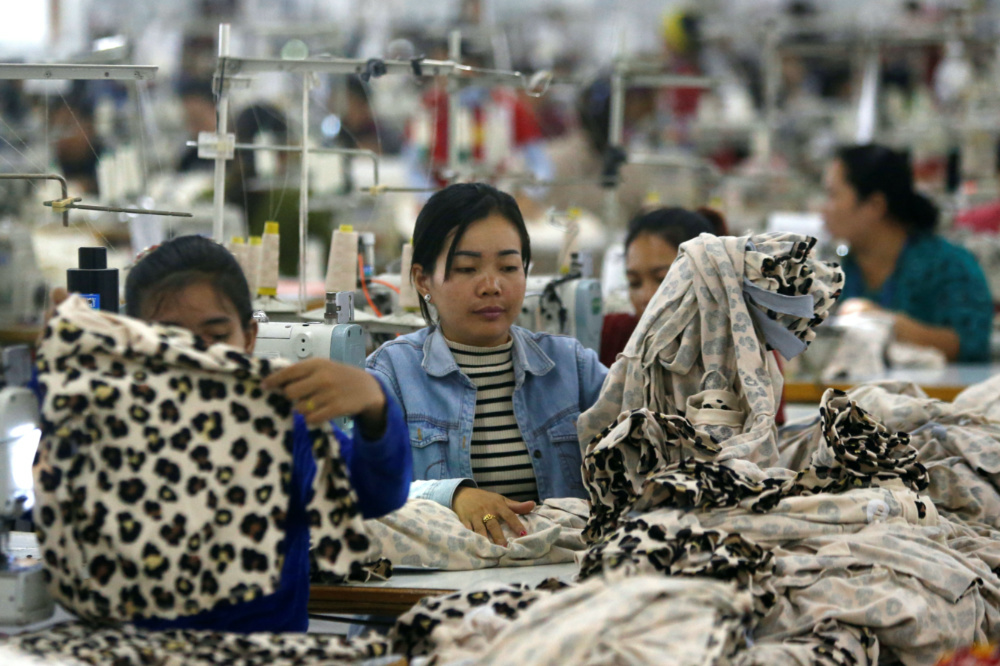Phnom Penh, Cambodia
Thomson Reuters Foundation
Tens of thousands of garment workers in Cambodia could face exploitation if proposed EU trade sanctions cause major fashion brands to downsize there, labour rights activists have warned.
The garment industry is Cambodia’s largest employer and generates $US7 billion annually, but it faces uncertainty after the European Union this year began a process that could see tariffs reintroduced next August.

Employees work at a factory supplier of the H&M brand in Kandal province, Cambodia, on 12th December, 2018. PICTURE: Reuters/Samrang Pring
The European Chamber of Commerce estimates that 90,000 jobs would be at risk if the EU suspended special trade preferences over Cambodia’s record on democracy and human rights.
A sourcing manager at Britain’s Primark said last week that European companies would “pull out of production” in Cambodia if trade preferences ended, while the head of production at Sweden’s H&M warned of a “substantial backlash”.
Workers who lose their jobs – mainly women – would likely end up in the entertainment or service industries, at bars and massage parlours, and be exposed to sexual exploitation, said Khun Tharo of the Center for Alliance of Human and Labor Rights.
“There is no safety net in those sectors,” the charity’s program coordinator told the Thomson Reuters Foundation.
The alternative would be migrating to Thailand where two million Cambodians are estimated to work, many of them undocumented and vulnerable to modern-day slavery, he said.
“Either way, serious risks will be taken.”
Cambodia benefits from the EU’s “Everything But Arms” trade program, which allows the world’s least-developed nations to export most goods to the EU free of duties.
The bloc is Cambodia’s largest trading partner, accounting for 45 per cent of its exports in 2018. Clothing factories in the country employ 700,000 workers, and garments make up a large share of exports to the EU, worth about $US5.5 billion.
Yet the value of exports to Europe fell by about $US600 million in the first half of 2019 compared with the same period last year, according to Ken Loo, secretary general at the Garment Manufacturers Association of Cambodia.
“You can already see the impact, just on the threat of withdrawal,” he said, predicting mass job losses from the second quarter of 2020 should the trade preferences be revoked.
David Savman, head of production at H&M, said the company would do less business in Cambodia if the trade benefits ended and named China and Indonesia as alternative sourcing countries.
He said H&M, which has about 50 factories in Cambodia, had an exit strategy to allow its suppliers to transition to new buyers, but that the firm had no further obligation to workers.
Xiaoxu Liu, sourcing manager for China and South-East Asia at Primark, which has about 20 factories in Cambodia, said staying in the nation without the trade deal would be a “big challenge”.
Attending the Textile and Apparel SEA Summit in Phnom Penh last week, the firms said they were working with suppliers in Cambodia to boost productivity in a bid to minimise job losses.
Cambodia’s garment factories are estimated to employ one in every 25 people, most of them young women who provide for their extended families.
“These young women…in the garment industry, they are not just working for themselves,” said Sok Chea Hak, national coordinator at the United Nations Industrial Development Organization. “It impacts close to one million households.”





